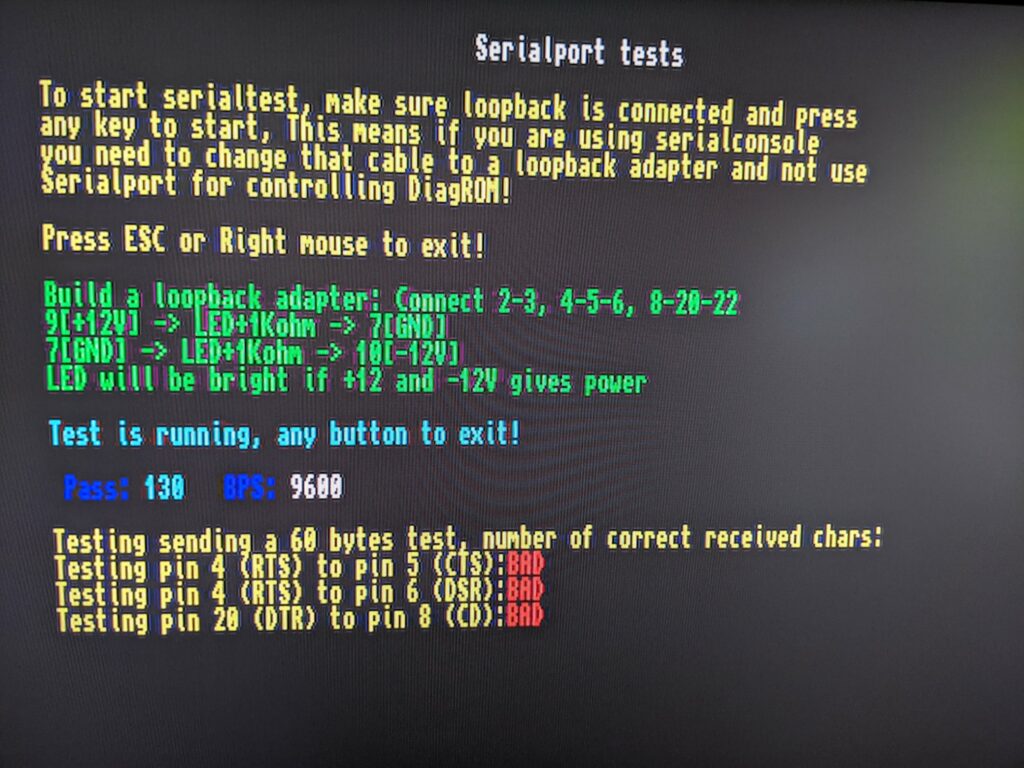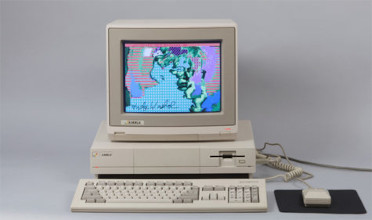What happens to long lived electrical engineers? They diode!
I have had trouble with the Amiga 4000’s serial port since I got the machine. At first I got a few bytes through every now and then, but it was pretty much unusable, even at 9600 bps.
When “learning online” about all the magic of open source in GitHub, I stubbled about Keir Fraser’s Amiga Test Kit, John Hertell’s DiagROM and SukkoPera’s Parallel / Serial port tester for the two.
Of course it’s not worth just ordering a single one of anything in the electronics world, and so I ended up joining the market of dongle builders. If you need one, let me know.

This project’s BOM was not as comfortable as some others, it suggested to adjust the resistor value such that the lights are all about equally bright. Conveniently enough I found after the fact that the schematics listed values that roughly matched with my math.
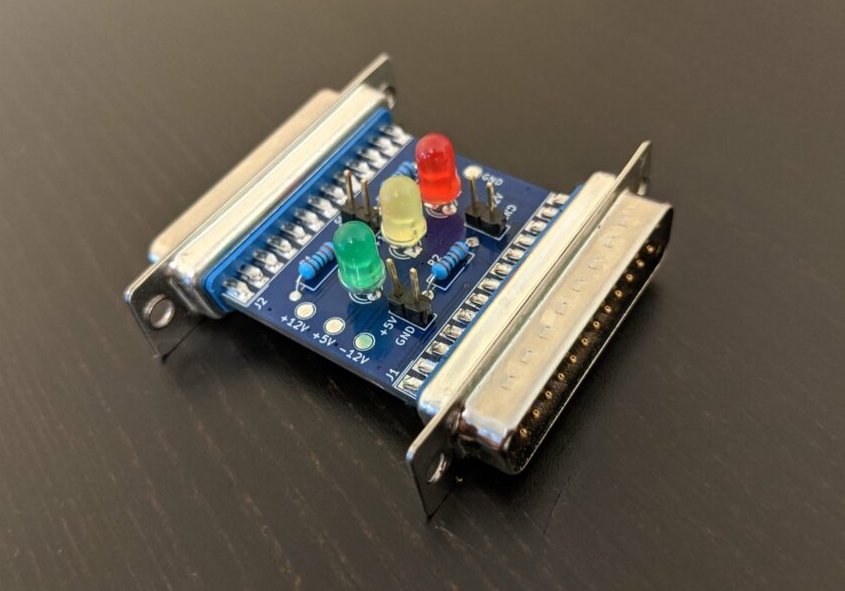
So this was helpful. No -12V light for the serial port. Clearly something is wrong, and this seems to be the evidence of what we already saw on the software side. But where do we go from here? My first suspicion was that something was wrong with the crappy recap that someone had previously done on the machine. But even after I fixed the recap (more pictures soon), the serial port was not working. Working my way up to become a rework tech, I needed all the help I could get, and Paul Resendez (Acill) and John Hertell were extremely helpful. I can only recommend to join Paul’s Discord server. John suggested that I work through the Amiga PCB Explorer. And gave me a pointer or two.

When measuring, I could see 0.5V against ground on the line, rather than the expected -12V. How was this possible? Did I measure incorrectly?
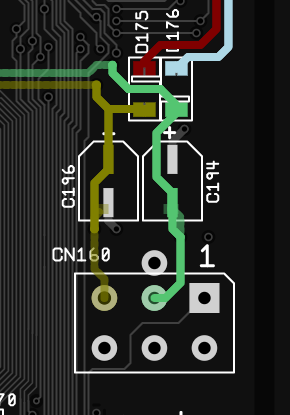
Measuring right at the power connector, everything looked great, but even right after the diode D175 things became fishy. Aha, there is that capacitor again. It must be at fault. Or must it? Or could it be, as John suggested, the diode itself that’s broken?
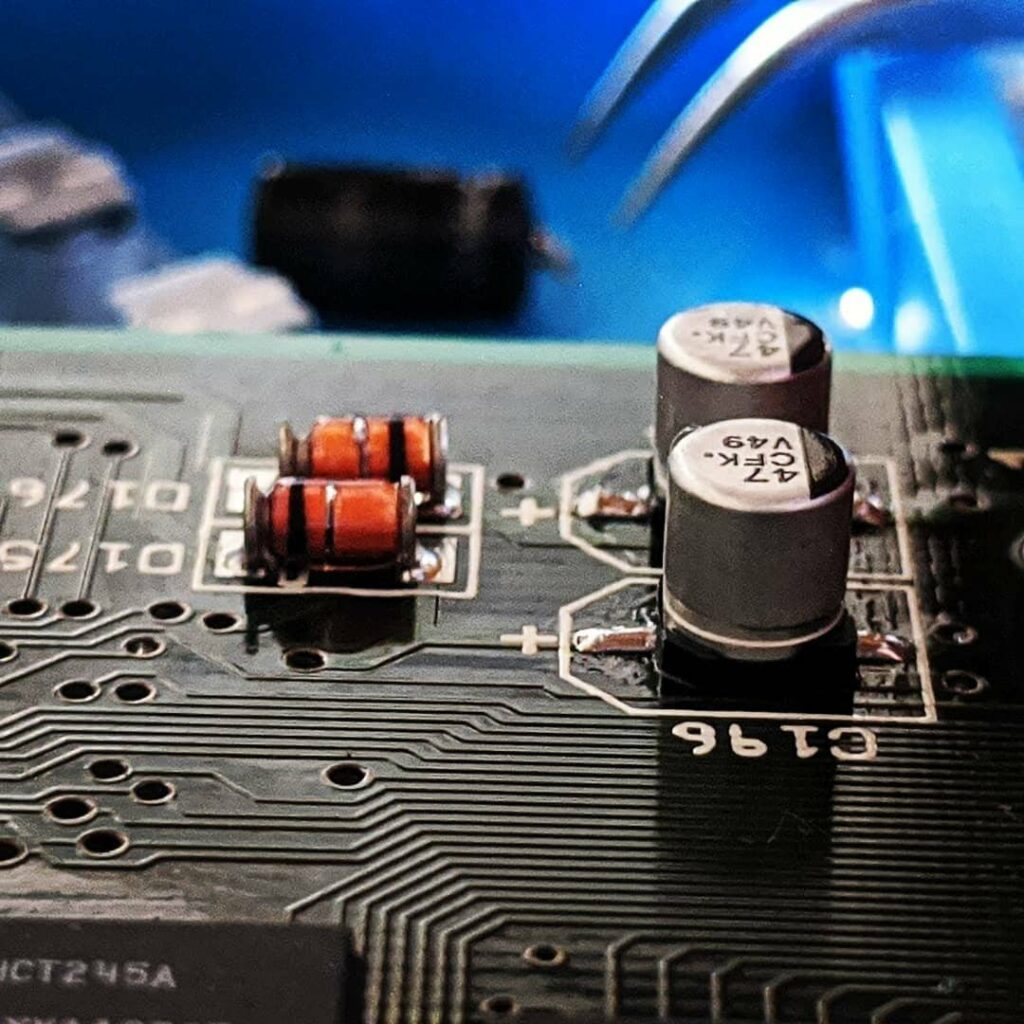
At those point I had no clue that my multimeter has a diode mode for exactly this purpose. So I decided to just give it a shot and exchange the broken diode. And since symmetry is nice and D175 and D176 do similar jobs, D175 got a new colleague at work as well

And bingo! The serial port works again like a charm. (And other things that require -12V? Are there any?)
